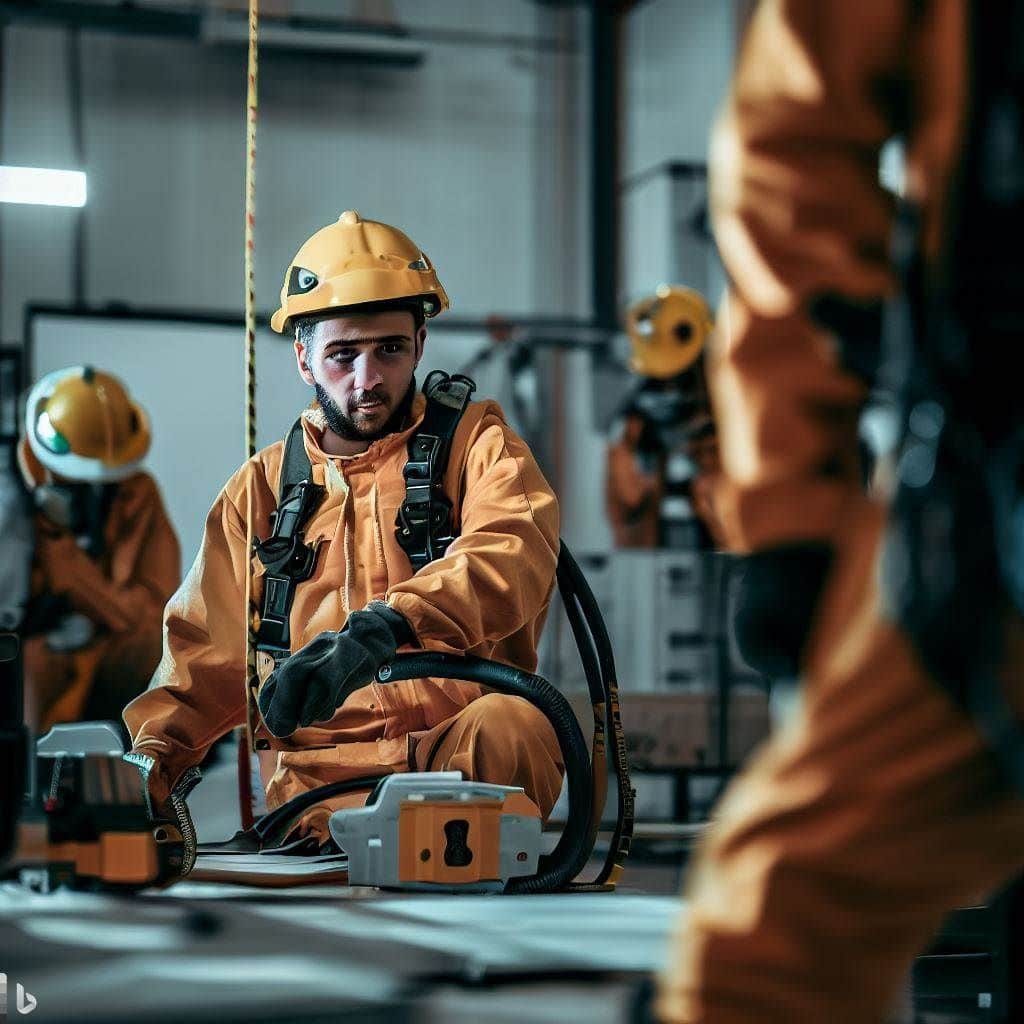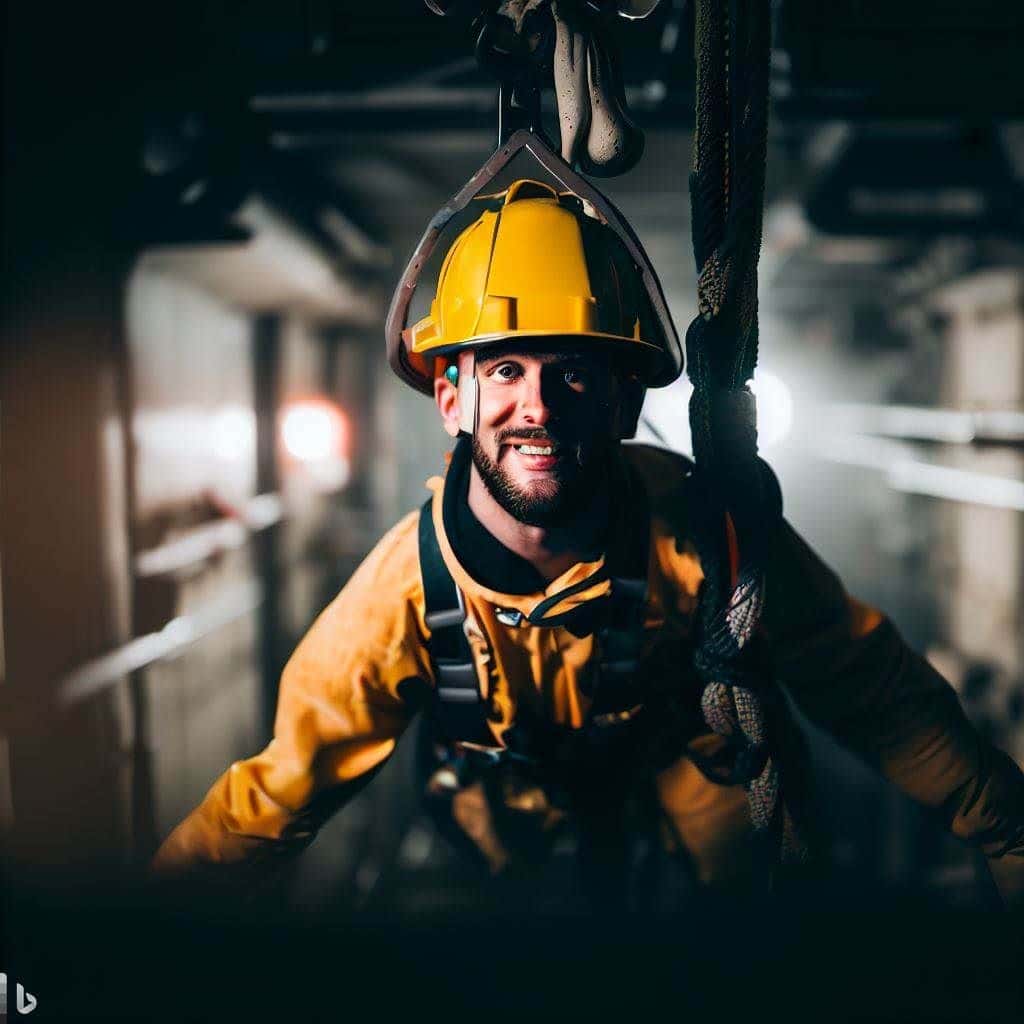Discover Who Needs Confined Space Training: A Comprehensive Guide for Safety Professionals
Confined space training is an essential aspect of workplace safety that aims to educate workers and supervisors about the potential hazards and risks associated with working in confined spaces.
This comprehensive guide offers insights for safety professionals on who needs confined space training, the different types of confined spaces, potential hazards, roles and responsibilities, legal requirements and standards, and the benefits of proper training. Confined spaces exist in various industries, including construction, manufacturing, agriculture, and utilities.
You can help prevent accidents, injuries, and fatalities in these potentially dangerous environments by providing workers with the necessary knowledge and skills. This article will also guide you in selecting the right confined space training provider and keeping your training up-to-date. With the right training, you can prioritize safety and create a more secure work environment for all employees.
Understanding confined spaces: Definition and types
Before delving into who needs confined space training, it’s crucial to understand the definition and types of confined spaces. According to the Occupational Safety and Health Administration (OSHA), a confined space is an area that:
- It is large enough and so configured that an employee can bodily enter and perform assigned work
- Has limited or restricted means for entry or exit
- It is not designed for continuous employee occupancy
There are two primary categories of confined spaces: non-permit-required confined spaces and permit-required confined spaces. Non-permit-required confined spaces meet the general definition of a confined space but do not contain any additional hazards, such as hazardous atmospheres, engulfment hazards, or other serious safety risks.
On the other hand, permit-required confined spaces contain one or more of the following characteristics:
- Contains or has the potential to contain a hazardous atmosphere
- Contains a material that has the potential to engulf an entrant
- Has walls that converge inward or floors that slope downward and taper into a smaller area which could trap or asphyxiate an entrant
- Contains any other recognized serious safety or health hazard

Identifying potential hazards in confined spaces
Understanding the potential hazards in confined spaces is crucial in determining who needs confined space training. Some of the most common hazards associated with confined spaces include:
- Hazardous atmospheres: This can include insufficient oxygen levels, flammable gases or vapors, and exposure to toxic substances, posing serious risks to workers’ health and safety.
- Engulfment hazards: Loose materials such as sand, grain, or sawdust can engulf and suffocate a worker in a confined space.
- Entrapment hazards: Confined spaces with inwardly converging walls or floors that slope downward can trap or asphyxiate a worker.
- Limited means of entry and exit: Workers may have difficulty entering or exiting the confined space, increasing the risk of injury or entrapment.
- Physical hazards: These can include dangerous equipment, extreme temperatures, noise, and poor visibility.
By identifying these hazards, safety professionals can assess the need for confined space training and ensure that all employees who work in such environments receive the necessary instruction to stay safe.
Roles and responsibilities: Who needs confined space training?
The primary question is, who needs confined space training? Ideally, anyone working within or around confined spaces should receive appropriate training. This includes:
- Entrants: Workers who enter and perform tasks within confined spaces need to understand the potential risks and hazards, as well as the proper procedures for entering, working in, and exiting these areas.
- Attendants: Attendants are responsible for monitoring the safety of entrants and maintaining communication with them. They must also be trained to detect hazardous conditions, initiate rescue procedures, and prevent unauthorized entry.
- Supervisors: Supervisors oversee confined space work and ensure all necessary safety precautions are in place. They must know the hazards, permit systems, and the roles and responsibilities of entrants and attendants.
- Rescue team members: In an emergency, rescue team members must be trained in the appropriate rescue techniques and specialized equipment.
By training all individuals involved in confined space work, safety professionals can ensure that everyone is prepared to recognize and address potential hazards, thereby reducing the risk of accidents and injuries.
Essential components of confined space training
A comprehensive confined space training program should cover a wide range of topics to ensure that workers are fully prepared to handle the challenges of working in these environments. Some of the key components of confined space training include:
- Understanding confined spaces: Trainees should be educated on the definition, types, and characteristics of confined spaces to help them identify these areas in their workplace.
- Recognizing hazards: The training program should cover the various potential hazards associated with confined spaces, including hazardous atmospheres, engulfment hazards, entrapment hazards, and physical hazards.
- Permit systems and procedures: Workers should be familiar with the permit systems in place for entering and working in confined spaces, as well as the procedures for obtaining, using, and closing permits.
- Roles and responsibilities: Training should cover the specific roles and responsibilities of entrants, attendants, supervisors, and rescue team members to ensure everyone understands their duties and can work together effectively.
- Emergency procedures and rescue: The training program should include information on emergency procedures, such as evacuation and rescue techniques and specialized rescue equipment.
By covering these essential components, safety professionals can provide workers with a solid foundation of knowledge and skills to help them stay safe in confined spaces.
Legal Requirements and Standards for confined space training
In addition to the practical benefits of confined space training, there are also legal requirements and standards that safety professionals must consider. OSHA has established regulations (29 CFR 1910.146) that outline the requirements for confined space training in the United States.
These regulations require employers to provide confined space training for all employees involved in permit-required confined space entry operations. The training must ensure that employees acquire the understanding, knowledge, and skills necessary to perform their duties safely.
Safety professionals should also know state or local regulations that may apply to their industry or workplace. By staying up-to-date on the latest legal requirements and standards, you can ensure that your confined space training program is compliant and effective.
Benefits of proper confined space training
Proper confined space training offers numerous benefits for employers and employees. Some of these benefits include:
- Increased safety: Proper training helps workers recognize and address potential hazards, reducing the risk of accidents and injuries in confined spaces.
- Improved efficiency: Workers who are properly trained can perform their tasks more efficiently, as they know the correct procedures and are less likely to make mistakes.
- Compliance with regulations: By providing comprehensive training, employers can demonstrate compliance with OSHA regulations and other applicable standards.
- Reduced liability: Employers who invest in confined space training can reduce their potential liability in the event of an accident, as they have taken the necessary steps to ensure the safety of their workers.
- Employee satisfaction: Employees who receive proper training are more likely to feel confident in their abilities and satisfied with their work environment, leading to increased productivity and retention.
By recognizing these benefits, safety professionals can make a compelling case for investing in confined space training and ensuring all employees receive the instruction they need to stay safe.
Selecting the right confined space training provider
Choosing the right confined space training provider is critical to the success of your training program. When evaluating potential providers, consider the following factors:
- Expertise and experience: Look for a provider with a strong track record of success in confined space training and a deep understanding of your industry’s hazards and challenges.
- Customization: A one-size-fits-all approach to training may not be effective for your unique work environment. Choose a provider that can tailor their training program to address the specific needs of your workplace and employees.
- Quality of instruction: The quality of the training materials and instructors is crucial to the effectiveness of your program. Look for providers that use engaging, interactive teaching methods and employ experienced, knowledgeable instructors.
- Accreditation: Ensure that the training provider is accredited by a reputable organization, such as the International Association for Continuing Education and Training (IACET) or the National Fire Protection Association (NFPA).
- Ongoing support: A successful confined space training program requires ongoing support and resources. Choose a provider that offers refresher courses, additional training materials, and other resources to help you maintain and update your training program as needed.
Considering these factors, you can select a confined space training provider to deliver the most effective and relevant instruction for your employees.

Keeping your confined space training up-to-date
Once you have implemented a confined space training program, it’s essential to keep it up-to-date and ensure that employees receive regular refresher training. This can help maintain their knowledge and skills and address any changes in regulations, equipment, or workplace conditions.
Some strategies for keeping your confined space training up-to-date include:
- Scheduling regular refresher courses: Depending on the nature of your industry and the specific hazards present in your workplace, you may need to schedule refresher training annually or biennially.
- Monitoring changes in regulations and standards: Stay informed about any changes to OSHA regulations or other relevant standards and update your training program accordingly.
- Incorporating new equipment and technologies: As new equipment and technologies become available, update your training materials and provide instructions on their proper use.
- Collecting employee feedback: Regularly solicit feedback from your employees to identify gaps in their knowledge or areas where additional training may be needed.
By keeping your confined space training up-to-date, you can ensure your employees are always prepared to recognize and address potential hazards in their work environment.
Conclusion: Prioritizing safety with confined space training
In conclusion, confined space training is a critical aspect of workplace safety that should not be overlooked. By understanding the types of confined spaces, potential hazards, and the roles and responsibilities of those involved, safety professionals can determine who needs confined space training and implement an effective program.
By selecting the right training provider and keeping your program up-to-date, you can ensure your employees have the knowledge and skills to stay safe in confined spaces. Ultimately, prioritizing safety with confined space training can help prevent accidents, injuries, and fatalities, creating a more secure work environment for all employees.
Frequently Asked Questions:
What is a confined space?
A confined space is an area that is large enough for a worker to enter and perform assigned work, has limited or restricted means for entry or exit, and is not designed for continuous employee occupancy.
What are the potential hazards of working in confined spaces?
Some common hazards include hazardous atmospheres, engulfment hazards, entrapment hazards, limited means of entry and exit, and physical hazards.
Who needs confined space training?
Anyone involved in working within or around confined spaces should receive appropriate training. This includes entrants, attendants, supervisors, and rescue team members.
What are the legal requirements for confined space training?
In the United States, OSHA has established regulations (29 CFR 1910.146) that outline the requirements for confined space training.
How can I keep my confined space training up to date?
To keep your training up-to-date, schedule regular refresher courses, monitor changes in regulations and standards, incorporate new equipment and technologies, and collect employee feedback.
